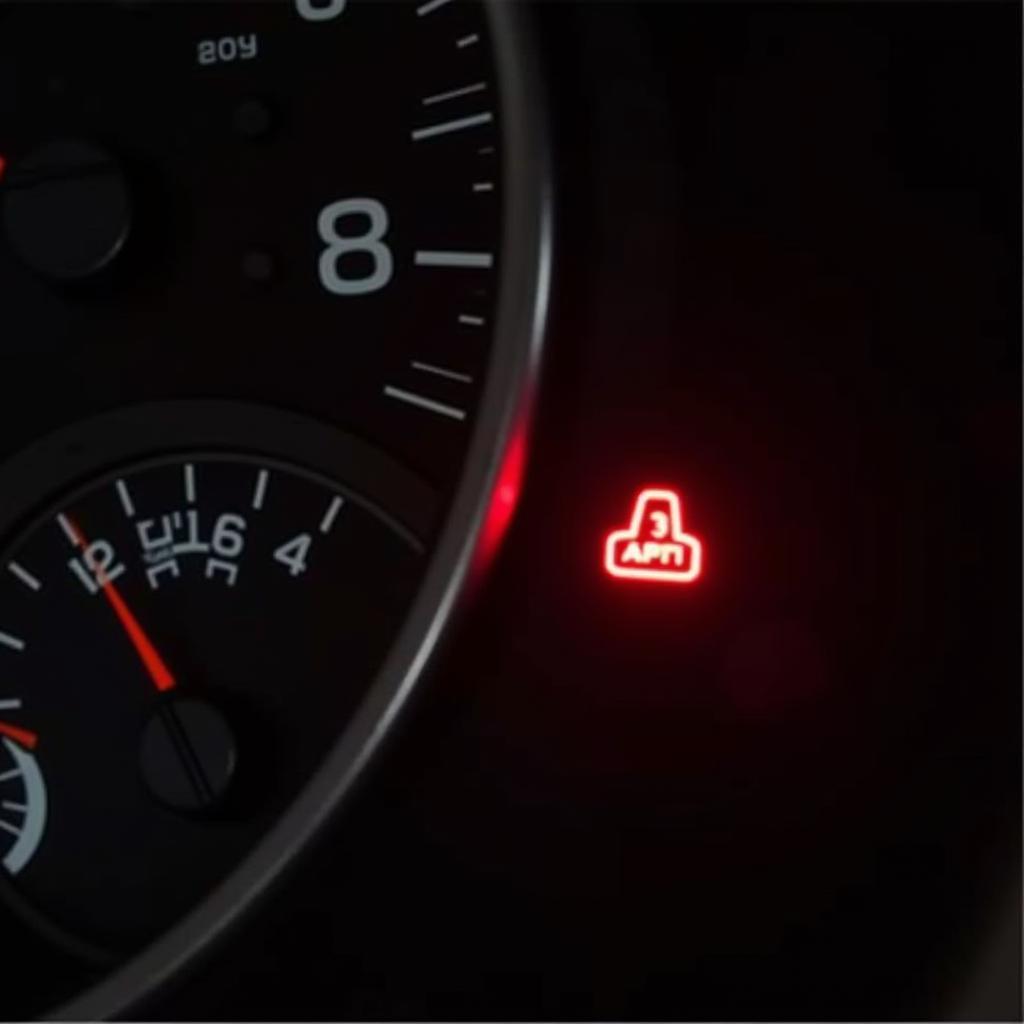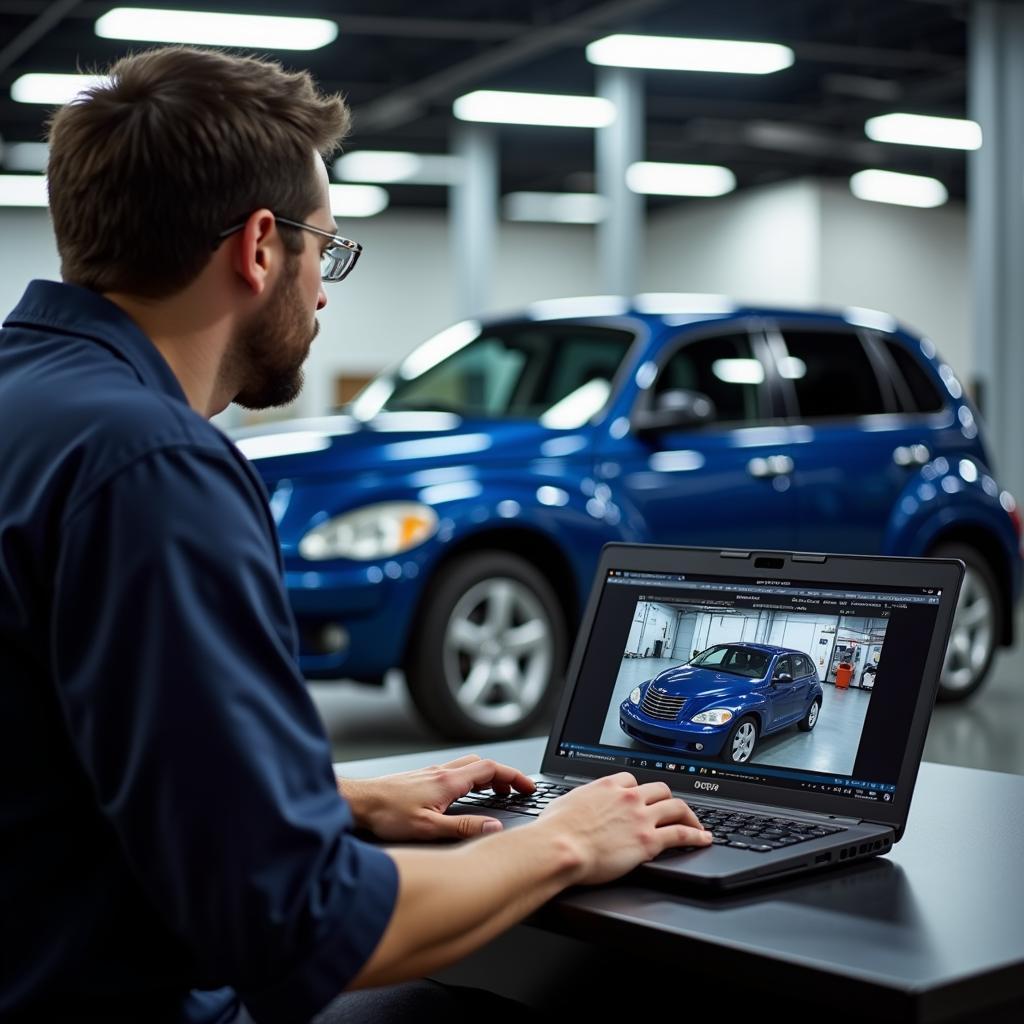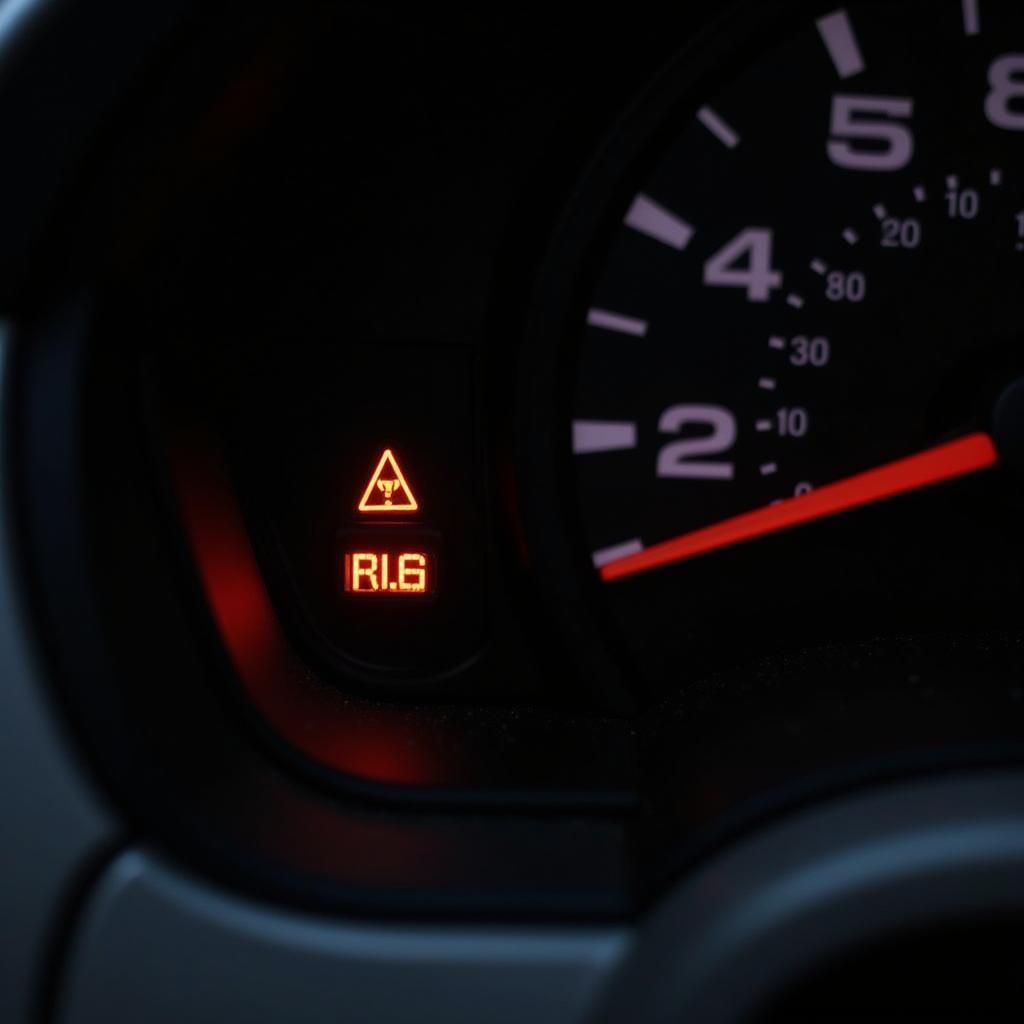A glowing brake warning light on your dashboard is a sight no PT Cruiser owner wants to see. It signals a potential issue with your braking system that shouldn’t be ignored. This article delves into the common culprits behind a PT Cruiser brake warning and provides insightful guidance on diagnosing and resolving these problems.
 PT Cruiser Dashboard with Brake Warning Light
PT Cruiser Dashboard with Brake Warning Light
Decoding Your PT Cruiser’s Brake Warning Light
The brake warning light on your PT Cruiser’s dashboard can illuminate for several reasons, ranging from a simple issue like a low brake fluid level to more complex problems within the braking system itself.
Common Causes of a PT Cruiser Brake Warning
Here’s a breakdown of the common reasons why your PT Cruiser’s brake warning light might be on:
-
Low Brake Fluid: This is the most frequent cause. Brake fluid is the lifeblood of your PT Cruiser’s braking system, and a leak or low fluid level can trigger the warning light.
-
Worn Brake Pads: Brake pads wear down over time due to friction. If they wear too thin, the brake warning light may activate.
-
Faulty Brake Pad Sensor: Some PT Cruiser models feature brake pad wear sensors. If the sensor malfunctions or gets damaged, it can trigger a false warning light.
-
Brake System Leaks: Leaks within the brake lines, calipers, or wheel cylinders can lead to a drop in brake fluid pressure and trigger the warning light.
-
Master Cylinder Issues: The master cylinder is a vital component of the braking system. If it’s not functioning correctly, it can disrupt hydraulic pressure and activate the warning light.
-
ABS Problems: While less common, issues with your PT Cruiser’s Anti-lock Braking System (ABS), such as a faulty ABS sensor or control module, can also illuminate the brake warning light.
Diagnosing the Problem: What to Do When Your Brake Warning Light Comes On
1. Check Your Brake Fluid:
Begin by inspecting the brake fluid level in the reservoir. If it’s below the minimum mark, add the appropriate DOT 3 or DOT 4 brake fluid (check your owner’s manual for the correct type). However, simply adding fluid won’t fix the problem if there’s an underlying leak, so further inspection is crucial.
2. Inspect for Leaks:
Carefully examine the brake lines, calipers, and wheel cylinders for any signs of fluid leaks. Leaks often appear as wet spots or drips around these components.
3. Examine Your Brake Pads:
Check the thickness of your brake pads by looking through the spaces between the wheel’s spokes. If the pads are worn thin (less than ¼ inch of friction material), they need replacement.
4. Seek Professional Help:
If you’re unable to pinpoint the cause of the brake warning light or suspect a more serious issue like a master cylinder problem or ABS malfunction, it’s best to consult a qualified mechanic immediately.
Addressing PT Cruiser Brake Warning Light: Remote Software Solutions
While some brake issues require hands-on repairs, advancements in automotive technology have paved the way for remote software solutions for specific problems.
“Remote software solutions can be remarkably effective in diagnosing and resolving issues related to a vehicle’s electronic control units, including those associated with the braking system,” says Emily Carter, Senior Automotive Diagnostics Engineer at CARDIAGTECH. “However, it’s essential to ensure the chosen service provider has a proven track record and expertise in your specific vehicle model.”
 Technician Performing Remote Diagnostics on a PT Cruiser
Technician Performing Remote Diagnostics on a PT Cruiser
Conclusion
Ignoring a glowing brake warning light in your PT Cruiser can be risky. Addressing the issue promptly ensures your safety and prevents further damage to your vehicle’s braking system.
Remember, while this guide offers valuable insights, consulting a qualified mechanic is recommended for a comprehensive diagnosis and appropriate repairs. By staying proactive and addressing brake issues promptly, you can ensure a smooth and safe driving experience in your PT Cruiser.

